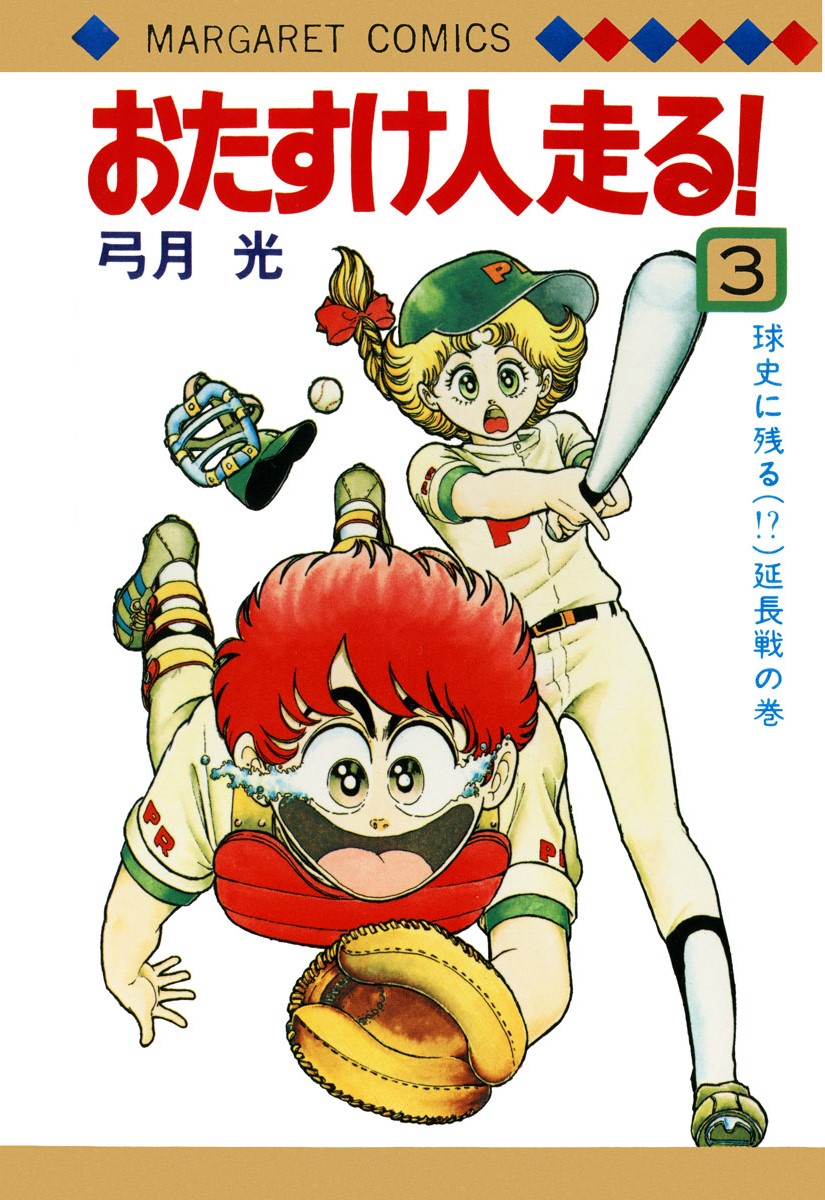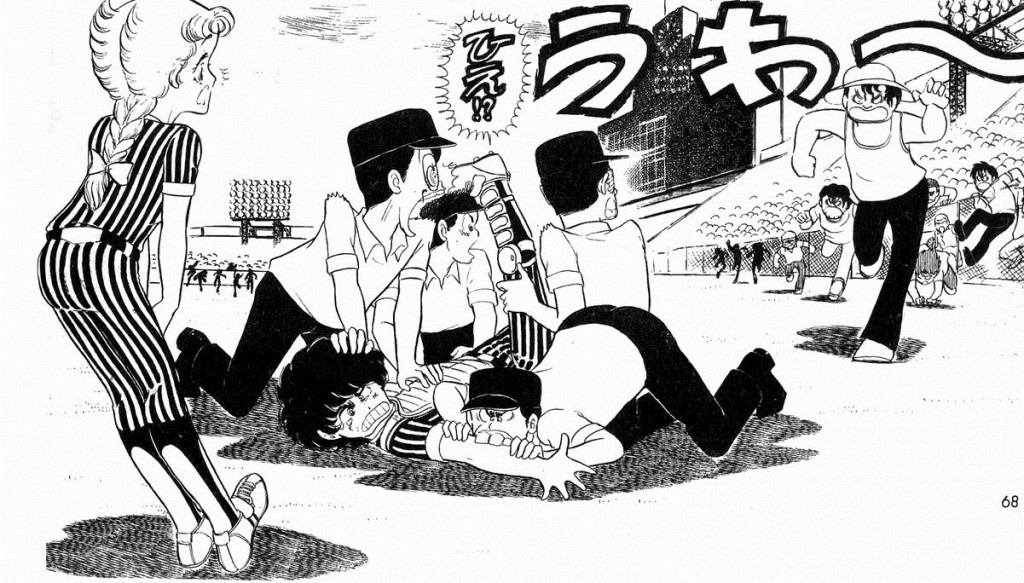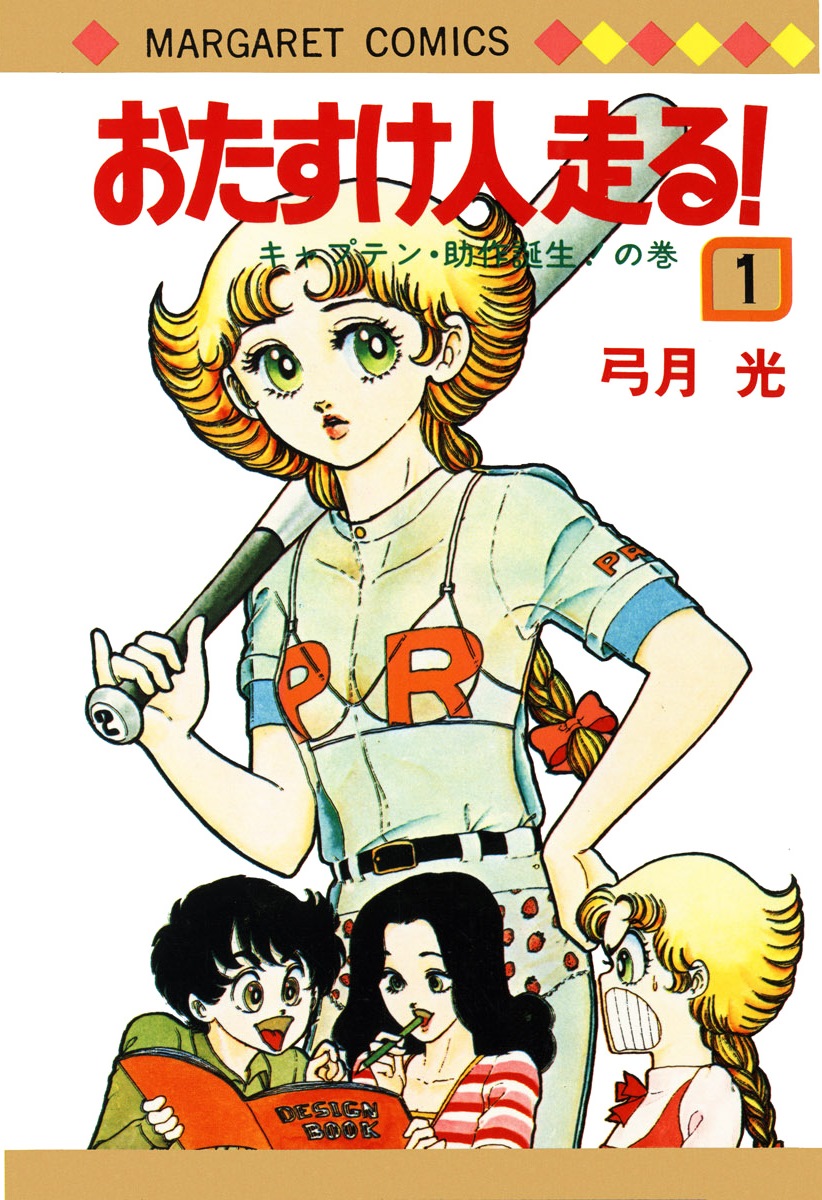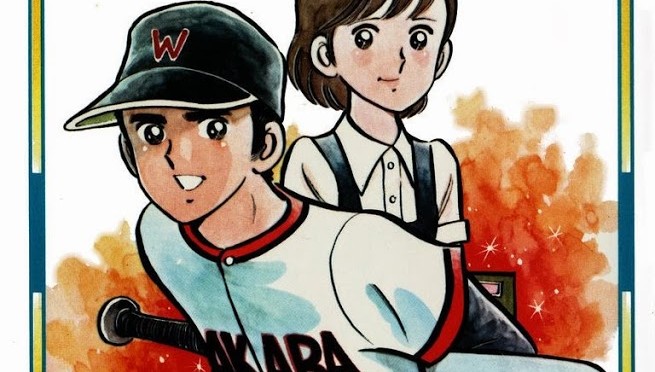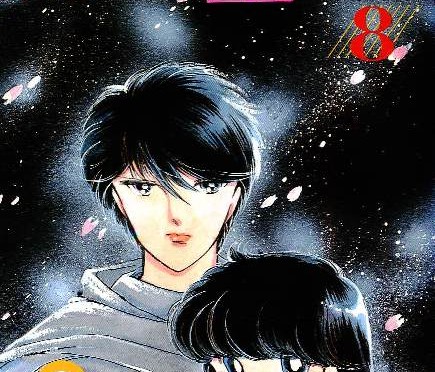Reading chapter 1b will be enough to give you an idea of the shift in power that characterizes the rest of volume 1 of Otasukebito Hashiru! (おたすけ人走る!). Before and during the entrance exam, Kana held all the cards. She could decide who got in and who stayed out and there wasn’t a thing they could do about it. Once the entrance exam ends and the new students are selected, however, they become the new heroes of the school. Nothing is too good for them, since they hold the future of the school in their hands while Kana is now just another student. Now then, what will they do with their new found power?
I don’t want to spoil the whole story, but if you suspect that Sukesaku Oda with a little bit of power is going to be a serious jerk, you are not far wrong. It was hard not to feel sorry for Kana at time, but she retains just enough selfish and mean tendencies to make it hard to root for either one.That’s all in volume 1. As the series progresses, Oda starts to like Kana more, a rival for her affections appears and she doesn’t seem to entirely hate him any more by the end of the series. Volume 2 is spent on the team’s qualification for the Koshien tournament, with all the wacky hijinks this entails, while Volume 3
is spent on the actual tournament itself.
The series blurb promised that Otasukebito was funny, but I didn’t get any real laughs until volume 3, where Oda inadvertently pisses off the umpires for his match in a cross-dressing incident and then has to deal with the inevitable fall out when they decide to take revenge. A picture speaks a thousand words:
The series becomes a more than decent sports manga in the last volume, featuring a typically long baseball game full of ups and downs, twists and turns and drama galore. It was very interesting stuff, though a little hard to believe in places.
Unfortunately this focus on pure sports and away from the gags and romantic tension that defined the earlier volumes was probably the downfall of the series. All the other characters fell by the wayside as this became a sports manga worthy of Shonen Jump or any other boys’ magazine. Not bad at all, but not the sort of thing you’d see in Margaret Comics. Or maybe there was some other reason for the series to end somewhat abruptly. I thought the characters needed a bit of help in the likeability department, but they got some laughs out of me in volume 3 and the sports component was satisfactory, so I was sorry to see it go. No sense living in the past though, so on to the next series!
